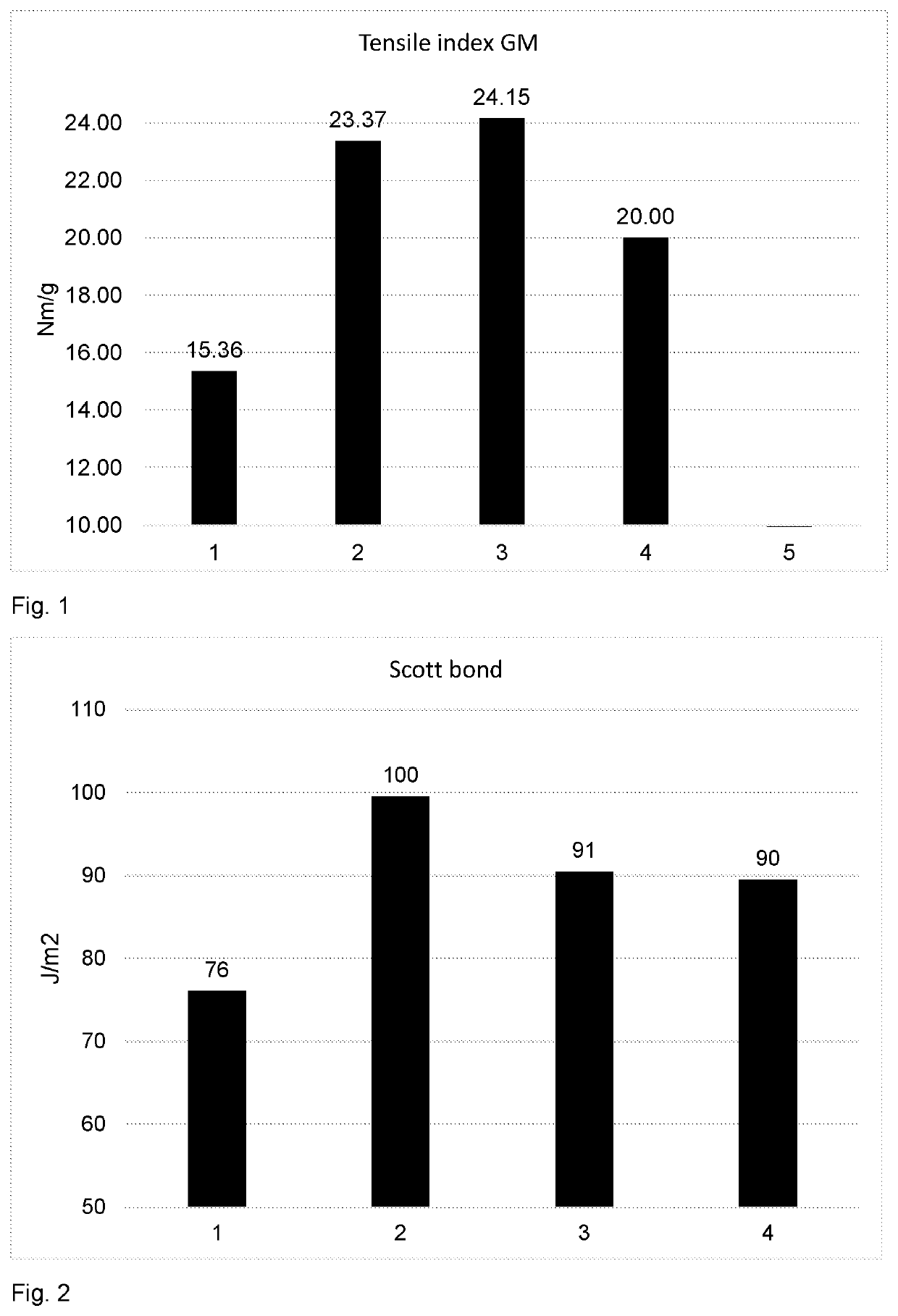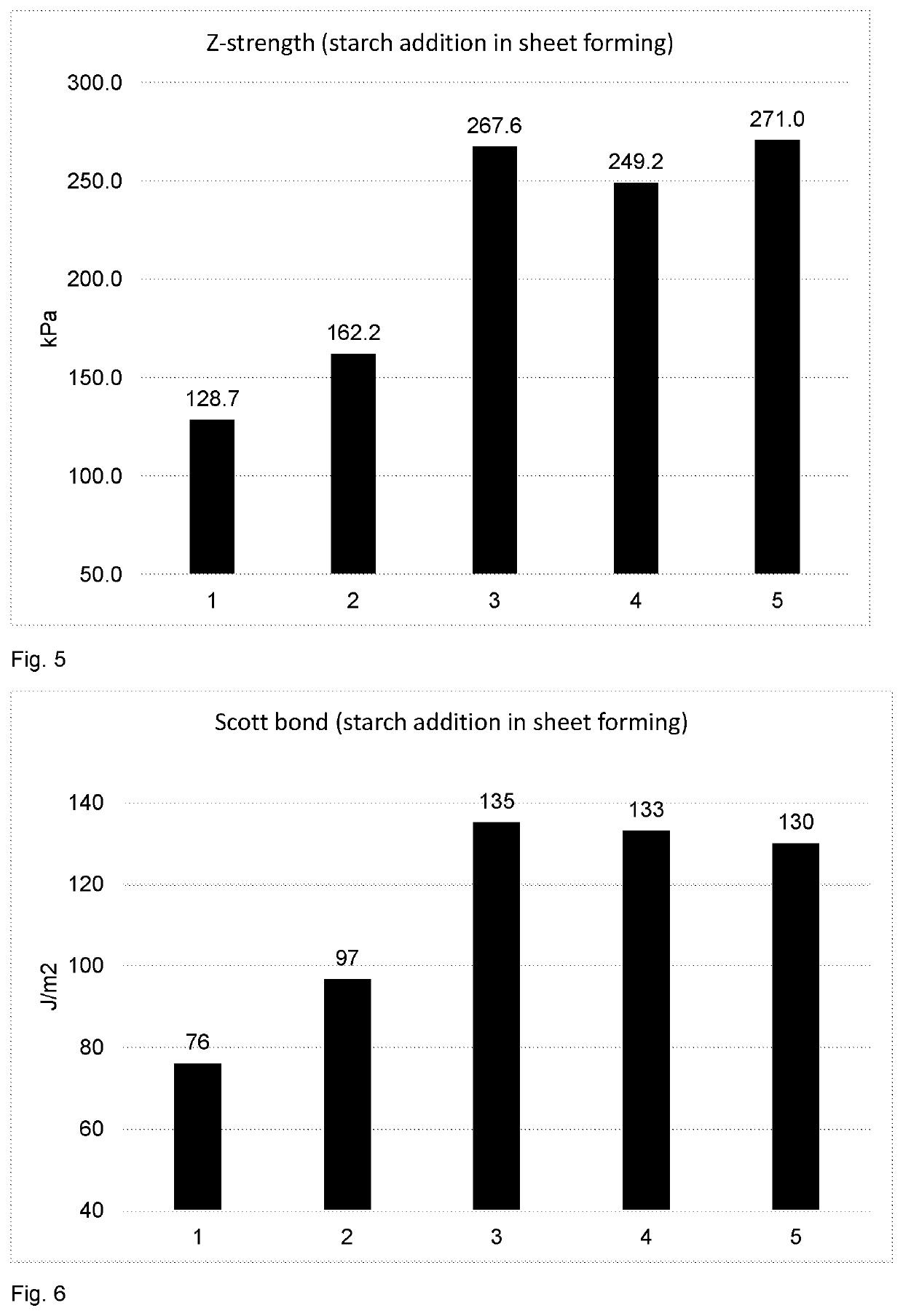Cellulose composition
a technology of cellulose and composition, applied in the field of microfibrillated cellulose composition, can solve the problems of saving costs and space in make-up equipment, and achieve the effects of reducing the amount of water in the product, and high solid conten
- Summary
- Abstract
- Description
- Claims
- Application Information
AI Technical Summary
Benefits of technology
Problems solved by technology
Method used
Image
Examples
example 1
n and Re-Dispersion of the Dried Micro Fibrillated Cellulose (MFC) Composition
[0119]A sugarbeet originated MFC compositions was used in the experiments.
[0120]The compositions were obtained by extracting using alkali, dewatering and mechanically fibrillating sugarbeet clippings which were obtained from a sidestream of sugar production. No additional chemical additives were added to the MFC apart from the ones used during the pretreatment extraction.
[0121]The thus obtained MFC composition had a solid content of 29.8 wt % (MFC1). The obtained MFC composition was further dried to two different solid contents (MFC2 and MFC 3).
[0122]The solid contents were measured of each sample. The samples were weighted and put into a laboratory oven over night (16 hours), at the temperature of 105° C. The samples were allowed to cool down in dessicator for 1 hour and then weighted again. The solid content of each sample was calculated
(mL+N,2-mL)×100N,1=%solidcontent
[0123]N,1=weigth of sample befor...
example 2
Analysis of Dried MFC Composition
[0132]The chemical composition of all samples MFC1 to MFC3 was determined (wt % of the composition):[0133]content of inorganic material (%) was determined via ashing the sample and weighting the residual based on the Tappi Test Methods T 211[0134]protein w-% was determined using the Kjeldahl nitrogen method and Kjeltec 8400 analyzer[0135]carbohydrate content, lignin and uronic acids content were determined using UV spectroscopy apparatus (HP 8452A, Ultraviolet-Visible), gravimetric determination and ion chromatography (Dionex ICS-3000 system) after acid hydrolysis of the sample[0136]determination of structural carbohydrates and ligning in biomass, according to Laboratory Analytical Proceedure from National Renewable Energy Laboratory (NREL), of April 2008, revised August 2012, by A. Sluiter et. al, (https: / / www.nrel.gov / docs / gen / fy13 / 42618.pdf)
TABLE 4Chemical composition of the MFC composition samples(measurements done from MFC1 sample)Lignin (Klason...
example 3
and Sheet Test with Dried MFC Samples
[0138]Laboratory sheets were made of CTMP furnish and the furnish was disintegrated with Lorenz&Wettre disintegrator following the protocol ISO 5263. Lab sheets were prepared with dynamic sheet former (Tecpap). The addition order of the chemicals to the pulp (pulp consistency 0.5%) was as follows (stirring 400 rpm):
[0139]1. MFC (at 0 seconds)
[0140]2. Fennopol K3400 (cationic polyacrylamide) (at 10 seconds)
[0141]3. Fennosil 2180 (silica) (at 20 seconds)
[0142]4. Sheet forming (at 30 seconds)
[0143]The sheets were allowed to stay in a constant temperature and humidity room (T=22 ° C., humidity=50%) for 1 day before the measurements. The sheet properties, such as tensile index, Z-strength and Scott bond were measured both in CD and MD according to appropriate ISO-standards.
TABLE 5MFC addition in different tests pointsFennopolSilica(kg / ton)(kg / ton)MFCTest point 1Pure0.220CTMP / ZerosampleTest point 2MFC10.22MFC1,30 kg / tonTest point 3MFC20.22MFC2,30 kg / to...
PUM
| Property | Measurement | Unit |
|---|---|---|
| Weight | aaaaa | aaaaa |
| Weight | aaaaa | aaaaa |
| Acidity | aaaaa | aaaaa |
Abstract
Description
Claims
Application Information
 Login to View More
Login to View More - R&D
- Intellectual Property
- Life Sciences
- Materials
- Tech Scout
- Unparalleled Data Quality
- Higher Quality Content
- 60% Fewer Hallucinations
Browse by: Latest US Patents, China's latest patents, Technical Efficacy Thesaurus, Application Domain, Technology Topic, Popular Technical Reports.
© 2025 PatSnap. All rights reserved.Legal|Privacy policy|Modern Slavery Act Transparency Statement|Sitemap|About US| Contact US: help@patsnap.com



